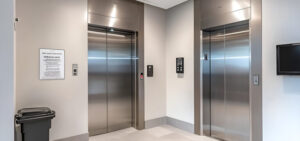Traffic management has always been a critical component of urban infrastructure. As vehicle density increases and road networks become more complex, efficient traffic control is no longer a convenience—it’s a necessity. At the heart of this effort lie traffic light controllers, the intelligent systems responsible for managing the flow of vehicles and pedestrians. These controllers have undergone a significant transformation over the last two decades, evolving from simple electromechanical timers to sophisticated, software-driven devices. In this article, we’ll examine the top 5 technologies used in modern traffic light controllers, focusing on their technical distinctions, comparative performance, and real-world impact.
Table of Contents
Toggle1. Adaptive Signal Control Technology (ASCT): Making Real-Time Decisions
What Is ASCT?
Adaptive Signal Control Technology allows traffic light controllers to adjust their timing in response to actual traffic conditions. Unlike fixed-time systems that follow preset intervals, ASCT continuously gathers data and recalibrates signal phases based on vehicle volume, lane occupancy, and queue lengths.
Core Features
- Real-time data acquisitionvia radar, inductive loops, or video detection
- Dynamic signal timingthat adapts every few seconds
- Integrated logicthat accounts for cross-street traffic, pedestrian phases, and special event fluctuations
Benefits and Performance Metrics
According to a report from the U.S. Federal Highway Administration, intersections using ASCT experience an average 10–25% reduction in delay time and a 15–30% improvement in travel time. Additionally, fuel consumption and emissions tend to drop due to smoother traffic flow.
| Feature | Fixed-Time Systems | Adaptive Systems |
| Response to congestion | None | Real-time |
| Energy efficiency | Basic | High |
| Maintenance complexity | Low | Moderate |
Verdict: For cities with unpredictable traffic patterns, ASCT-equipped traffic light controllers offer measurable operational gains and environmental benefits.
2. Vehicle-to-Infrastructure Communication (V2I):
Enabling Smart Connectivity
How V2I Works
V2I allows vehicles and traffic infrastructure to communicate directly. Modern traffic light controllers can receive and transmit data such as vehicle speed, location, and signal phase status. This is made possible through short-range wireless communication protocols like DSRC or C-V2X.
Advantages of V2I Integration
- Preemptive signalingfor emergency vehicles, reducing intersection delays by up to 40%
- Enhanced safety for pedestrians and cycliststhrough dynamic signal adjustments
- Data sharing for real-time route optimizationvia navigation apps and in-vehicle systems
Technical Considerations
Although initial setup costs are higher (20–30% more than conventional systems), the long-term return includes improved throughput and safer intersections.
3. Artificial Intelligence and Machine Learning: From Reactive to Predictive Control
AI in Traffic Management
Artificial Intelligence (AI) has emerged as a powerful tool in traffic optimization. When integrated into traffic light controllers, AI algorithms analyze historical and real-time data to optimize signal timing, anticipate traffic surges, and reduce bottlenecks before they occur.
Functional Capabilities
- Pattern recognition: Identifies peak-hour traffic flow trends
- Anomaly detection: Flags issues like stalled vehicles or lane closures
- Predictive modeling: Suggests optimal phase lengths based on current and past behavior
Case Example
In a pilot program in London, AI-driven traffic light controllers helped reduce stop-start cycles by 18%, leading to smoother flow and lower CO₂ emissions by 12%.
| Criteria | Traditional Systems | AI-Based Controllers |
| Adjustability | Pre-set only | Continuous learning |
| Integration with sensors | Basic | Deep integration |
| Inter-section coordination | Manual | Automated |
Verdict: While AI integration requires robust datasets and processing power, the payoff in efficiency and responsiveness makes it a top-tier upgrade for cities focused on long-term smart traffic networks.
4. Cloud-Based Centralized Management: Smarter System Oversight
Role of Cloud Connectivity
Cloud-connected traffic light controllers are part of a larger move toward remote management and real-time oversight. Instead of maintaining each intersection independently, operators can now monitor and control hundreds of intersections from a central dashboard.
Key Benefits
- Remote signal timing updateswithout the need for on-site visits
- Automatic alertsfor hardware failure, power issues, or data dropouts
- Cloud backupsfor signal timing plans and historical traffic data
Impact on Operations
A smart city project in Singapore using cloud-based control systems reported a 40% decrease in technician site visits and improved response time to failures from 90 minutes to under 15 minutes.
| Function | On-Premise Systems | Cloud-Connected Systems |
| Scalability | Limited | High |
| Real-time diagnostics | No | Yes |
| Inter-agency coordination | Difficult | Simplified |
Verdict: For municipalities managing multiple intersections or planning expansions, cloud-managed traffic light controllers deliver lower operational costs and greater flexibility.
5. LED Signal Heads and Smart Power Systems: Efficiency Meets Reliability
Upgrading the Light Source
One of the most overlooked but impactful upgrades in traffic light controllers is the shift from incandescent bulbs to LED signal heads. Paired with smart power modules, they significantly reduce energy usage and increase durability.
Energy and Performance Benefits
- 80–90% lower power consumptionper light unit
- Lifespan of 50,000–100,000 hours, vs. 8,000–10,000 for incandescent
- Instant-on capability and better visibility in adverse weather
Advanced Features in Smart Power Modules
- Voltage regulationto handle power surges
- Battery backupsto maintain operation during outages
- Load sensingfor fault detection
| Comparison Item | Incandescent + Basic Power | LED + Smart Power |
| Energy usage per signal | ~70W | ~10–15W |
| Lifespan | 1–2 years | 5–10 years |
| Maintenance intervals | Frequent | Minimal |
Verdict: LED lighting and smart power integration are foundational technologies that not only reduce long-term costs but also increase the resilience and reliability of traffic light controllers.
Summary: Choosing the Right Technology Mix for Traffic Light Controllers
Selecting the best traffic light controllers today is not just about traffic volume but about data flow, responsiveness, and energy efficiency. Here’s a quick recap of the technologies explored:
| Technology | Main Benefit | Best For |
| Adaptive Signal Control | Real-time optimization | Urban and variable traffic zones |
| Vehicle-to-Infrastructure | Connectivity and safety | Smart mobility corridors |
| Artificial Intelligence | Predictive, learning-based control | High-density metro areas |
| Cloud-Based Central Management | Centralized monitoring & updates | Citywide deployments |
| LED & Smart Power | Efficiency and reliability | All intersections |
Municipalities, contractors, and urban planners should assess current infrastructure needs, budget constraints, and long-term city goals before investing. For many, a hybrid approach—combining adaptive control, AI, and cloud-based monitoring—can yield the most efficient and scalable outcomes.
Final Thoughts
The evolution of traffic light controllers reflects a broader shift toward intelligent urban infrastructure. By embracing cutting-edge technologies such as AI, V2I, and adaptive signaling, cities can address both current traffic challenges and prepare for future mobility demands. As consumer expectations grow and environmental regulations tighten, these innovations are no longer optional—they are essential for building smarter, safer roads.
If you’re part of a procurement or planning team evaluating traffic systems, focus not just on initial cost, but on lifecycle performance, upgrade potential, and integration compatibility. The right technology stack can make the difference between a reactive traffic system and a truly intelligent one.
0





